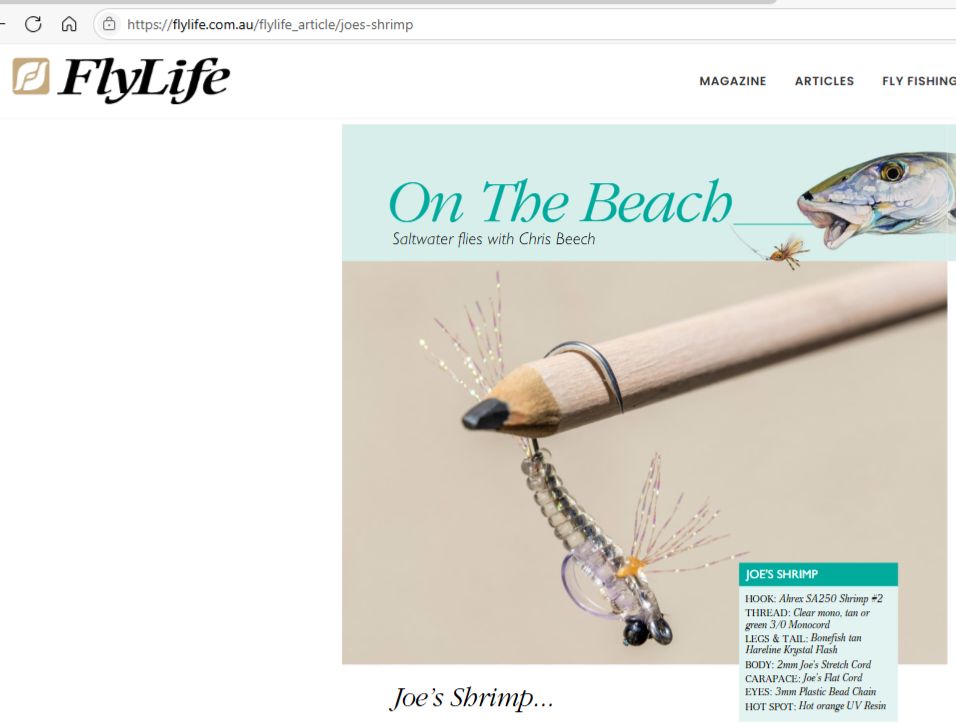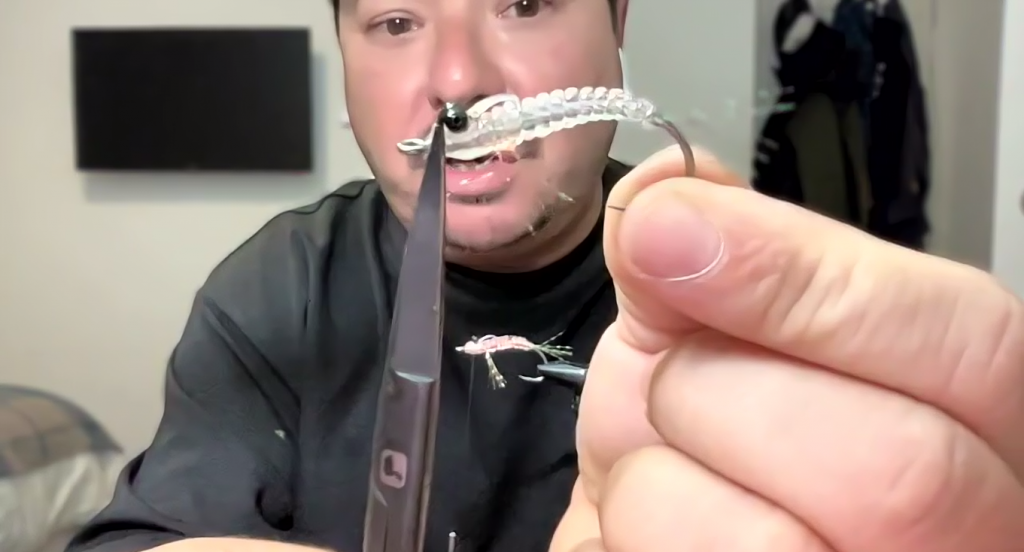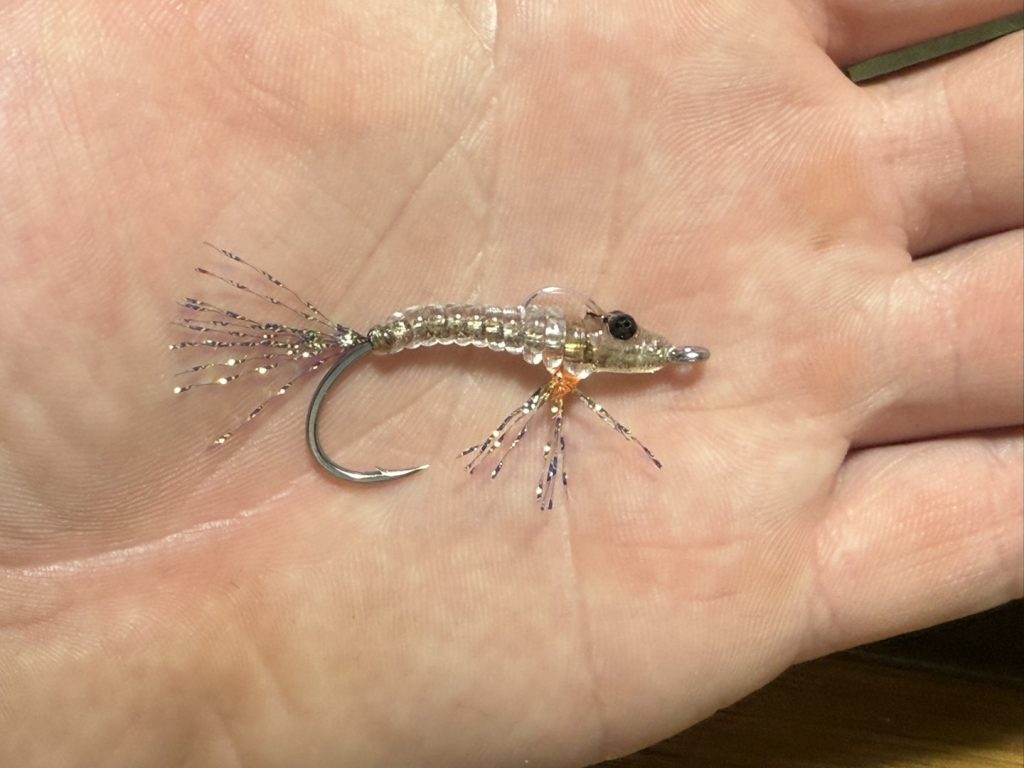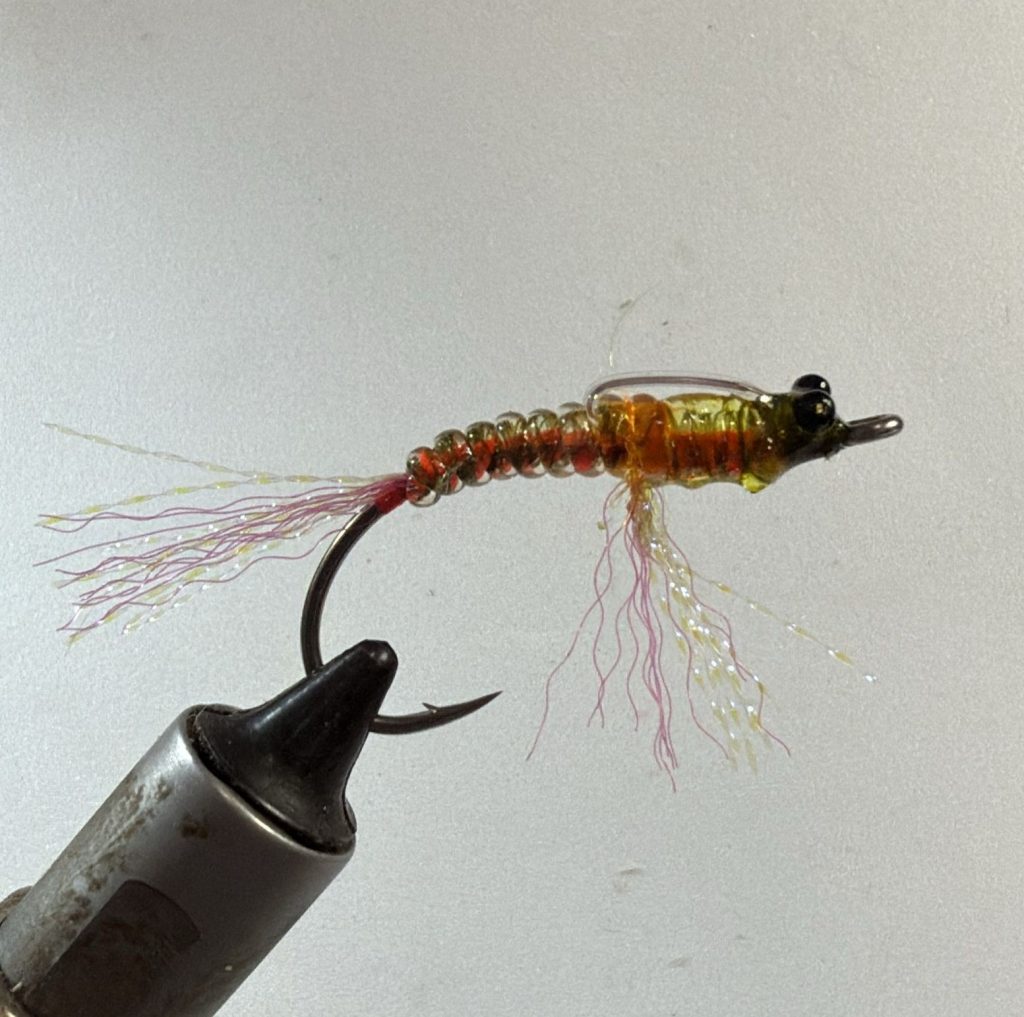Seems ACT Government are surveying users of ACT waterways on how they think it is being managed. Responses by 15 Aug
https://www.facebook.com/share/p/19DUCAbyz8/
For those not on Facebook try https://www.surveymonkey.com/r/act-social-media

Seems ACT Government are surveying users of ACT waterways on how they think it is being managed. Responses by 15 Aug
https://www.facebook.com/share/p/19DUCAbyz8/
For those not on Facebook try https://www.surveymonkey.com/r/act-social-media

While there were no formal CAA events, many members headed uphill for the last of the stream trout fishing. Bucking the trend, Ryan and Tom headed to the coast chasing some willing Australian salmon. This has enthused him for a mid-winter estuary trip down to Merimbula. Already I can see much interest evinced on the CAA Whatsapp group.
While BJ wasn’t able to wet a line during a work trip overseas, he provided us with some very attractive Canadian fishing photos.
This month’s fly tying saw a special guest lead, and intriguing material. The attendees were fascinated and saw multiple opportunities.
As always, many thanks to Greg S for the outcomes from his Facebook trawls.
This month will be more about a technique rather than a particular tie. In the US it seems to be known as ‘hackle stacker’ whereas in UK it is known as ‘paraloop’. We’ll explore the effect together. You can choose to follow one of the patterns offered here, or make something up yourself.
Here are some examples where the central idea is implemented slightly differently:
none of the above use a gallows tool, but I might get lazy and use my dodgy/handmade one a bit like this one https://www.youtube.com/watch?v=kzZY9v-JzoQ&t=25s
nothing like this one https://www.youtube.com/watch?v=KmVCRdyDP0g
This fly seems overly complex with the wing and tail, but it shows really clearly the way to hold the loop in the absence of a gallows. https://youtu.be/E9HTjiQBEy8?feature=shared
keyword dryfly

Featured in issue 117 of Fly Life and can be found on Youtube at https://www.youtube.com/watch?v=MhGn0Nx3pC0&t=1s
See also https://flylife.com.au/flylife_article/joes-shrimp … works best on desktop computer.
Ingredients are:
Ahrex SA250 Shrimp Hook
Veevus 6/0 Thread – White
Joe’s Stretch Cord
Joe’s Flat Cord
Crystal Flash
Arctic Snow Dubbing Orange
Loon UV Fly Finish – Thick
Bead Chain Eyes – Black

We were lucky to have the ‘Joe’ from the fly name come along and show us all the tricks. Fuller report in July 2025 Newsletter, but here are some of the results.


Keyword wetfly
Next Meeting
9 July – Normal time of 7:30 at Raiders Club Weston. Speaker is to be Greg Bane from Red Baron ALSE – our local Personal Locator Beacon maintenance team. His talk will tell us all about how they operate and how to care for them.
Make sure you return any trophies held so that new awardees can be engraved.
Next Activities
23 July – Fly tying via Zoom 7:30 – Bill will lead with ‘hackle stacker’ (otherwise known as ‘paraloop’) technique. Notes in news blog and eventually email.
New: 11-13 July – Ryan will take us to Merimbula chasing Australian salmon. A detailed email re accommodation etc has been sent out.
13 Aug – Annual General Meeting
Our annual lessons are on again for three weeks. Mornings of 14, 21, 28 Sep. First two near Questacon and final week on water. All details in the flyer.
Lyall and Nathan have spoken to me often of how to advance beyond the clock face 10-2 using the terms translation before rotation.
Ian tells me Peter Hayes signs off his emails with \\\\\\|/ (representing casting to the right).
This dude from Florida has different language (“isosceles trapezoid”) but it is the same thing. His video with on-screen drawings make the concept very clear.
Jason was recently looking to book a hut and found a substantial discount is available for anglers. I’m not sure how many huts this applies to.

There was quite a quick response to the post about Peachy’s YouTube piece on dry fly selection.
I wonder if our readers are aware of CAA’s Tips blog. Originally this held a yarn by Jason Q about his fly fishing journey, to inspire others to get into the sport. The blog evolved to include a diverse range of topics from the laws of angler access to tips on handling fish and how best to take a photo. I encourage you to browse.
I just added two new ones, on straightening your leader and one on different strike techniques. I’ll promote them in the forthcoming newsletter for those that read it but don’t follow our blog.
A while ago I had a series of tips from members in the newsletter … I should assemble them and add to the blog – a closed season project? 😀